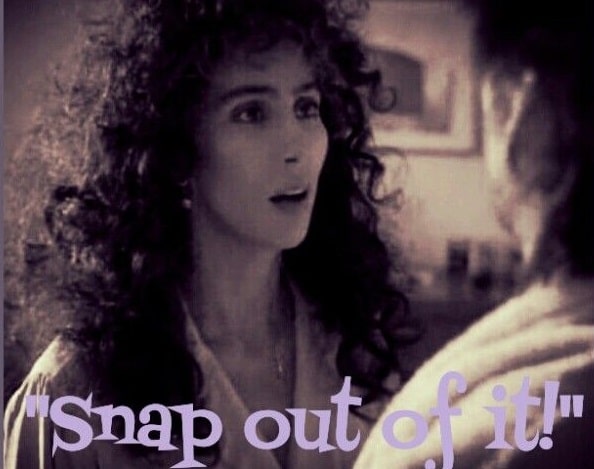Recently, I had to give myself a slap in the face. The kind of “snap out of it” slap-a-thon that Cher gave to Nicolas Cage in “Moonstruck” when he was acting dopey-lovestruck – although not so hard.
I was feeling a bit sorry for myself, having tinnitus and hearing loss and all. Poor me, why me, how did I pull this straw, couldn’t I have a different problem!? Rosacea, maybe?
Then I slap-slapped myself.
First off, I’m sure people with rosacea would also rather have a different issue. Secondly, didn’t I realize how lucky I am? Relatively speaking, that is, compared to other conditions or diseases?
- I’m not in pain.
- I’m not itchy.
- I don’t have to stay within sprinting distance of a bathroom.
- I can afford hearing aids and other assistive technology, and I have access to knowledgeable and creative hearing health professionals.
- Not everyone can.
What about people whose knees turn to jelly at the price tag on hearing aids? Because they can’t afford it, they go without hearing aids, or spend time saving up for them. People should not have to save up for an important medical device that helps them hear and improve their overall health. I know, I know, some of you might think that hey! These people have smartphones, computers, TVs, they drink beer – gosh, some of them even smoke! Well, these might be the same people who are young and starting out with a lower income and the costs of daycare so they can go to work. Or maybe they’re seniors with fixed pensions who already live simply and frugally. And the costs of most of these so-called luxury items have nothing on the price of a pair of hearing aids!
If I went running into the ER yelling, “I’ve lost all feeling in my left hand!” or ‘I’ve lost my mind!”’, the hospital staff would jump into action (when it was my turn to be seen, of course) to fix the problem. Sure, I might have to pay for some medicine, or therapy or counseling, but if I were a hearing person running into the ER screaming, “I can’t hear, I can’t HEAR!”, I would be assessed, maybe prescribed some antibiotics for sudden deafness, and referred to an otolaryngologist (ENT). But if it were recommended that I get a hearing aid (or two) so that I can hear, in many areas of the country, continent and universe, I’d be on my own to pay for them.
We’ve made amazing advancements in hearing health care and yes, even in the area of affordability. Still the problem persists, and both individual hearing loss advocates and organizations such as the Hearing Loss Association of America, the Canadian Hard of Hearing Association and their international counterparts, need to keep up the fight.
I’ve always allowed myself one bad-mood-hearing-day a year – sometimes more frequently. And it’s allowed, because in spite of superb technology, there are still many moments of struggle, of fatigue, of frustration that get to us.
But after our little self-pity party, we need to shake it off and go back to putting one foot in front of the other, which is the only way to move forward. We just need some help, along with the occasional self-slap or even better, an I-Love-Me moment.
Photos: Still from “Moonstruck” of Cher and Nicolas Cage







People who worry about the cost of hearing aids should look at it realistically from a true dollars and cents viewpoint. The typical service life of a hearing aid, last time I looked, is about four years. Four years is 1460 days. Just divide 1460 into $2000.00 and you get $1.37 as your cost per day on that basis. Get a true service life figure for your particular unit and do this with the real cost you are given, and you will be surprised at the low daily maintenance cost of your hearing. Wear it every day, all day, work at it, and watch your life improve in many ways. Of course there will be other related expenses for batteries and accessories, but averaging better hearing over the long term should make you feel a whole lot better about buying that quality of life item that can easily save your life at a critical moment.